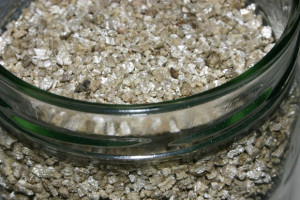Mesothelioma is a deadly and painful disease. Not only that, but the vast majority of patients are told they only have a very short period of time left to live after being diagnosed with the disease. There is no cure for malignant pleural mesothelioma, and the only treatments that are available are generally very invasive, painful, and in the best case scenarios only increase a patient’s prognosis for a matter of months before he or she finally succumbs to the asbestos-related illness.
 However, despite the many problems with finding a cure or more effective treatment, researchers are working every day on finding a better way to help patients who are dying from malignant pleural mesothelioma and the other types of malignant mesothelioma. There are three types of malignant mesothelioma, and the type depends on where the cancer occurs. Typically, it is not truly different types of mesothelioma, but rather three separate locations for it.
However, despite the many problems with finding a cure or more effective treatment, researchers are working every day on finding a better way to help patients who are dying from malignant pleural mesothelioma and the other types of malignant mesothelioma. There are three types of malignant mesothelioma, and the type depends on where the cancer occurs. Typically, it is not truly different types of mesothelioma, but rather three separate locations for it.
If the cancer occurs in the lungs, it is known as malignant pleural mesothelioma, which is often abbreviated by doctors and Boston asbestos injury attorneys as “MPM.” On the other hand, if the cancer occurs in the stomach or abdominal cavity, is known as malignant peritoneal mesothelioma. The third and final place mesothelioma can occur is the chest cavity. If the cancer occurs in the chest, it is known as malignant pericardial mesothelioma.
The reason the cancer occurs in one of these places is because, when the deadly asbestos fibers are inhaled, they can become embedded in a layer of protective tissue known as the mesothelium, and, after a period of 20 to 50 years in the average case, the deadly fibers can metastasize into malignant mesothelioma. However, it should be noted that once asbestos does metastasize into a tumor in one of these three areas, the cancer can quickly spread to any other part of the victim’s body, which is why it is often so hard to treat.
One new treatment, as discussed in a recent article from Science Daily, involves the use of a live strain of bacteria that may help improve the response rate of immunotherapy procedures. The results came from a phase 1b clinical trial involving human patients with malignant pleural mesothelioma. There was a roughly 60 percent response rate for chemotherapy combined with immunotherapy and this live bacteria culture, which is a significant step up in terms of total disease control. However, disease control typically means slowing down the growth of a malignant mesothelioma tumor, as there is no way to actually get the tumors to go into remission as of this time.
One reason it is so hard to find a real treatment and eventual cure for mesothelioma is that it is a relatively rare disease, in that only a few thousand people die each year from the disease. While this is obviously devastating to the families of the victims, the numbers are far fewer than the numbers associated with other diseases, such as atrial fibrillation (Afib) for example. This means that there are fewer patients to buy the drug and less money to make from selling it. Since most, if not all, major pharmaceutical companies are in this to make money, that matters, and there isn’t much of a market for treating mesothelioma.
If you or a loved one is diagnosed with mesothelioma in Boston, call for a free and confidential appointment at (617) 777-7777.
Additional Resources:
Immunotherapy with live bacterium improves response rate in malignant pleural mesothelioma, April 14, 2016, Science Daily
More Blog Entries:
WT1 Granted Orphan Drug Status for Mesothelioma Treatment, March 18, 2016, Mesothelioma Lawsuit Attorney Blog
 Mesothelioma Lawyers Blog
Mesothelioma Lawyers Blog

